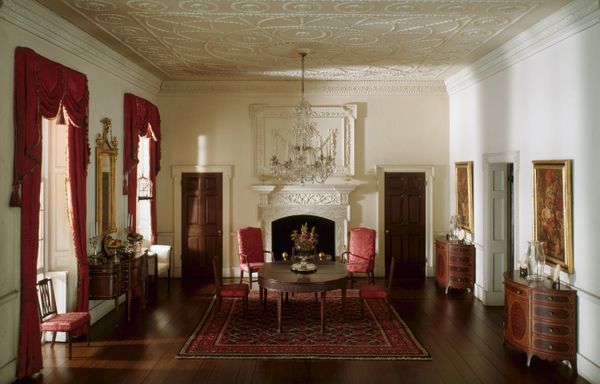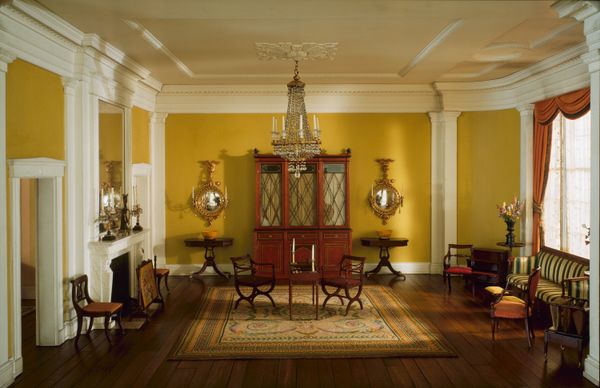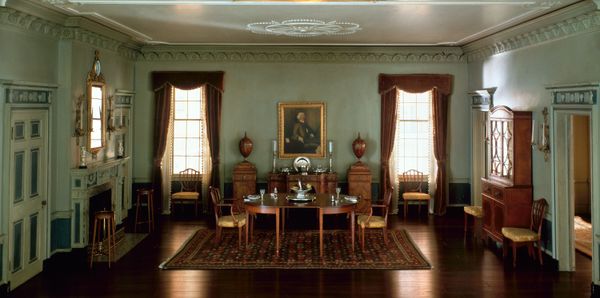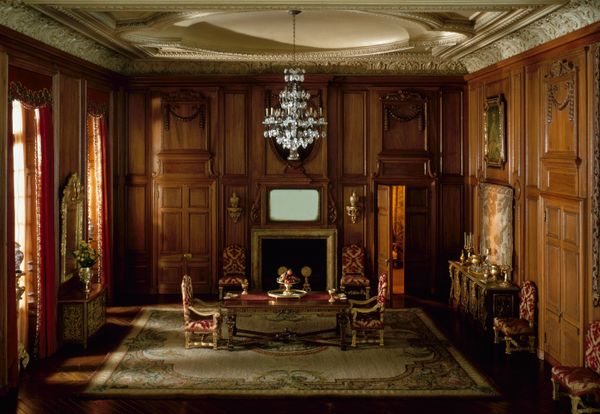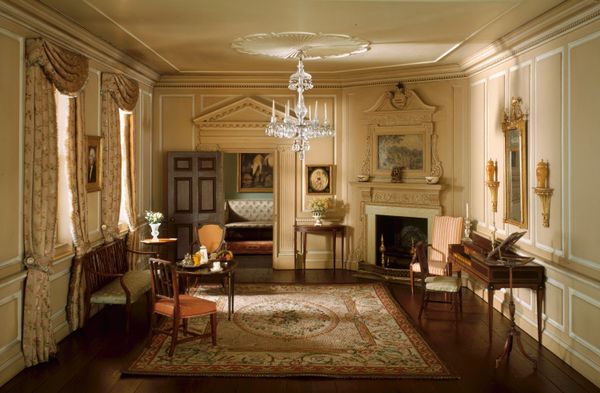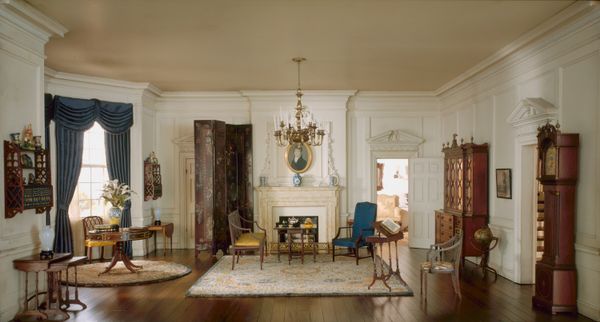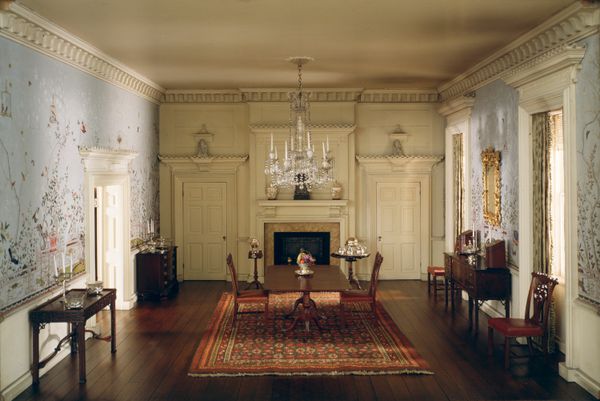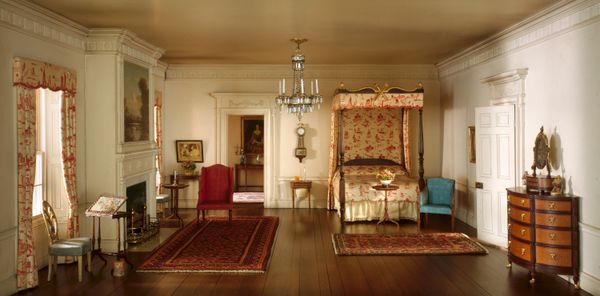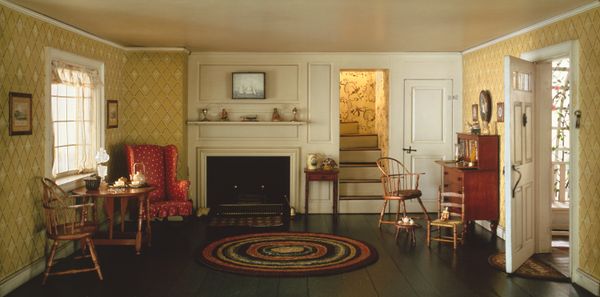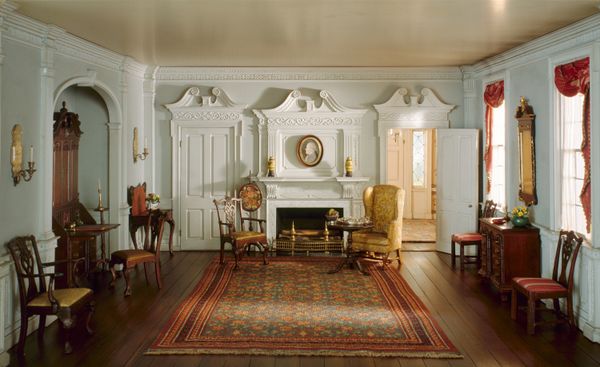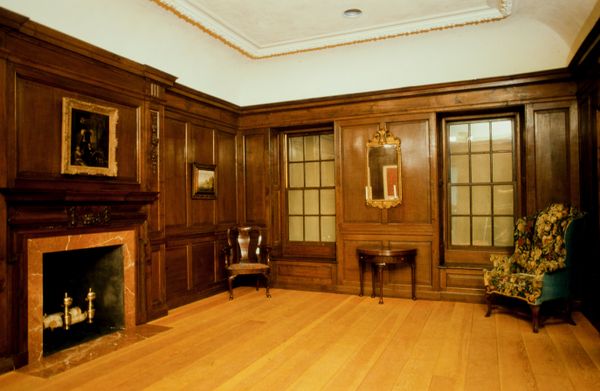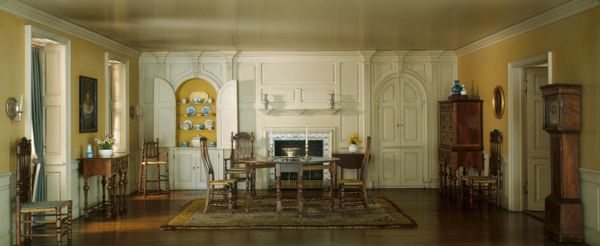
Kamerbetimmering bestaande uit een halfhoog lambris, een dubbele en een enkele deur met hun omlijstingen, boezem van schoorsteen, plafond en bespanningsstof c. 1906 - 1910
0:00
0:00
wood, architecture
#
interior architecture
#
unusual home photography
#
interior photography of hospitality
#
arts-&-crafts-movement
#
brown and beige
#
wooden interior design
#
warm toned
#
interior architecture photography
#
brown beige
#
warm-toned
#
wood
#
decorative-art
#
brown colour palette
#
architecture
Dimensions: height 21 cm, width 37 cm, depth 18.5 cm
Copyright: Rijks Museum: Open Domain
Editor: We're looking at Theo Nieuwenhuis's "Kamerbetimmering," a room interior from around 1906 to 1910, constructed primarily from wood. The attention to detail is striking. The room looks so ornamental. What historical context would illuminate our understanding of this work? Curator: This interior is deeply rooted in the Arts and Crafts movement, a reaction against industrialization that championed handmade, decorative arts. It suggests a desire to return to simpler times and emphasize craftsmanship. Where do you see this influence? Editor: I notice it particularly in the coordinated design; everything seems unified, from the light fixtures to the wall coverings. Was this kind of holistic design typical of the period? Curator: Absolutely. The Arts and Crafts movement extended beyond individual objects. It aimed for total environments where architecture, furnishings, and decorative elements worked harmoniously. Consider the socio-political implications of creating such spaces. Who were they for, and what did they represent? Editor: It feels like a statement of wealth, perhaps, or refined taste. Something about the richness of the materials. Was it accessible to the wider public, or was it confined to the wealthy? Curator: That's astute. While the Arts and Crafts movement had socialist ideals about making beautiful things accessible, these elaborate interiors were largely commissions for affluent clients who could afford such meticulous and extensive work. Its public role therefore gets complicated – ideal versus reality. Editor: That tension between accessibility and exclusivity is something to think about, isn't it? Thank you, I have never looked at decorative art under this light! Curator: My pleasure. Understanding that relationship gives you a stronger context to look at the object in the space where it existed, so that you can reflect on a past and a social imaginary of beauty.
Comments
No comments
Be the first to comment and join the conversation on the ultimate creative platform.
